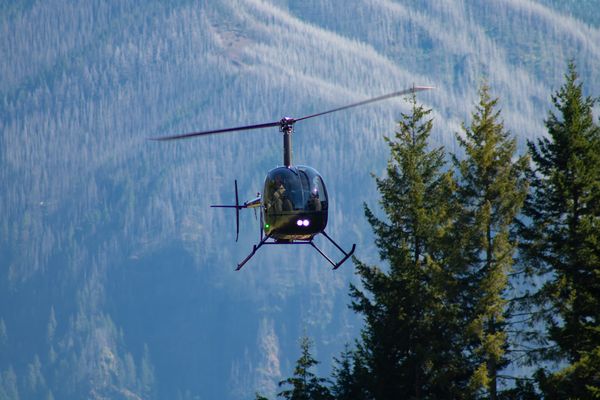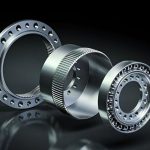The sight of a helicopter hovering mid-air or smoothly gliding across the sky is nothing short of mesmerizing. But behind this seemingly effortless flight is a complex interplay of physics, engineering, and aerodynamics. At the heart of a helicopter’s ability to fly is the rotor system, which serves as its wings, propeller, and lift generator — all in one. 🌀💨
In this article, we’ll unpack how helicopters achieve lift, break down the components of the rotor system, and explore the science that allows these machines to defy gravity and perform feats that airplanes can’t. 🌍📘
The Basics: What Is Lift? 🪁🌬️
Before diving into helicopter-specific mechanics, let’s revisit the concept of lift in aviation. Lift is a force that opposes gravity and keeps an aircraft in the air. For airplanes, lift is generated by fixed wings moving rapidly through the air. For helicopters, lift comes from rotating blades, which act like spinning wings.
The principle behind lift in both aircraft types is the Bernoulli’s principle and Newton’s third law:
-
Bernoulli’s Principle: Faster airflow over a curved surface creates lower pressure. Rotor blades are shaped like airfoils (similar to wings), causing faster air above them and lower pressure — resulting in lift.
-
Newton’s Third Law: Every action has an equal and opposite reaction. As rotors push air down, the helicopter is pushed up.
Anatomy of a Helicopter Rotor 🚁🔧
The main rotor system is what allows a helicopter to lift off the ground, hover, and maneuver in all directions. Key components include:
🌀 Rotor Blades
Long, narrow blades shaped like airplane wings (airfoils) that cut through the air and generate lift.
⚙️ Rotor Hub
The central part that connects the blades to the rotor mast and transfers mechanical energy to them.
🧩 Swashplate Assembly
A crucial mechanism that allows the rotor blades to change their pitch (angle), enabling control over lift and direction.
🔩 Pitch Links and Control Rods
Mechanical linkages that transmit pilot commands to the rotor system.
There are typically two types of rotors:
-
Main rotor: Provides lift and directional control.
-
Tail rotor (or anti-torque system): Counters the torque from the main rotor to prevent the helicopter from spinning uncontrollably.
How Lift is Generated in Helicopters 🪄📈
When the rotor blades spin, each blade moves through the air, creating a pressure difference above and below the blade surface — just like an airplane wing, but in a circular path.
Here’s how it works:
-
Blade Rotation ➡️ The engine powers the rotor mast, spinning the rotor blades.
-
Airfoil Shape ➡️ The blade’s curved top surface causes air to travel faster over the top, reducing pressure.
-
Pressure Differential ➡️ Higher pressure below the blade and lower pressure above pushes the blade (and helicopter) upward.
-
Lift is Born 🪂
By adjusting the angle of attack — the angle between the blade and the oncoming air — pilots can increase or decrease lift.
Types of Blade Control: Collective vs. Cyclic 🎮🛠️
To control lift and movement, pilots use two primary controls:
1. Collective Pitch Control 📶
This changes the pitch of all rotor blades equally at the same time. Pulling up on the collective increases the pitch, thus increasing lift — and the helicopter rises.
2. Cyclic Pitch Control 🔄
This tilts the rotor disk in a specific direction, allowing the helicopter to move forward, backward, or sideways. It works by changing the pitch of each blade individually during its rotation.
Together, these controls allow helicopters to hover, take off vertically, land vertically, and even fly backwards or laterally — maneuvers that are impossible for most airplanes. 🛫🌀
The Role of the Tail Rotor 🧭🌪️
The spinning main rotor also creates torque — a rotational force that would cause the helicopter’s body to spin in the opposite direction. To counter this, helicopters are equipped with a tail rotor, which:
-
Produces horizontal thrust to oppose the torque.
-
Allows yaw control (rotation about the vertical axis), so the pilot can steer the nose left or right.
Some helicopters use alternative systems like NOTAR (No Tail Rotor), which uses directed air to achieve the same anti-torque effect. 🌬️
Special Helicopter Abilities 🕹️💫
Helicopters have several unique flying capabilities:
-
Vertical Takeoff and Landing (VTOL) 🛫
-
Hovering in place, even with no forward motion 🧍♂️
-
Sideways and backward flight ↩️
-
Access to tight spaces where fixed-wing aircraft can’t operate
These features make helicopters ideal for rescue missions, military operations, aerial surveying, and urban transport. 🚨🛰️
Common Challenges in Rotor Dynamics ⚠️⚙️
Despite their versatility, helicopters face several challenges:
-
Vibration and noise due to unbalanced rotor dynamics
-
Retreating blade stall, where one blade slows down too much during flight
-
Dissymmetry of lift, a condition caused by forward flight where one blade generates more lift than the other
-
Blade flapping, a natural response to dissymmetry, mitigated by hinges and design
Advanced rotor systems and fly-by-wire technology are helping to address these issues. 🤖🔬
The Future of Helicopter Technology 🛸🚀
Innovations in rotorcraft technology are pushing boundaries further than ever:
-
Electric and hybrid helicopters for quieter, cleaner flight
-
Tiltrotor aircraft like the V-22 Osprey that blend fixed-wing and rotorcraft capabilities
-
Autonomous drones and air taxis that use rotor-based lift for urban transport
-
Coaxial rotors and quadcopters, improving stability and performance
As these technologies evolve, helicopters are set to become even more efficient, adaptable, and integrated into everyday life. 🌐🛸
Conclusion: Lifting Off With Science 🚁💡
Helicopters are marvels of aerodynamic engineering, capable of precise and flexible movement that no other aircraft can match. By manipulating spinning rotor blades and mastering airflow, these incredible machines conquer gravity in a vertical dance powered by physics and human ingenuity.
Whether rescuing people from hard-to-reach areas, transporting cargo to mountain peaks, or exploring the skies of Mars (yes, NASA’s Ingenuity helicopter!), rotorcraft continue to inspire awe and push the limits of what’s possible in aviation. 🚀🌍
Next time you see a helicopter overhead, you’ll know — it’s not just flying, it’s engineering in motion. ✨⚙️


